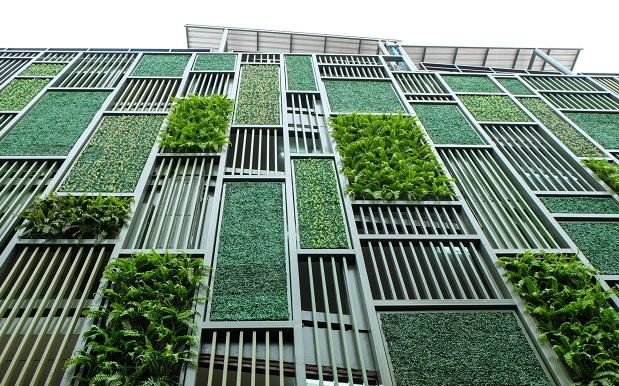According to the World Economic Forum (WEF), around 80% of the buildings in existence will still be around in 2050. It is therefore essential that, in order to combat climate change, we retrofit them for energy efficiency, writes Thabang Byl, Buildings segment lead at Schneider Electric.

Additionally, a study conducted by Schneider Electric and WSP in 2023 found that retrofitting buildings with digital and electric solutions can significantly reduce carbon emissions, with potential reductions of up to 70%. This involves integrating smart building and power management systems, as well as replacing fossil fuel-based heating systems with electric alternatives.
Fast-forward to 2025, and both statements still hold true. Indeed, it has become a guiding principle in conversations around sustainability, urban planning and energy efficiency.
In South Africa, where many commercial buildings, particularly in cities like Pretoria, Johannesburg, and Cape Town, date back to the 1970s,1980s, or even older, retrofitting should be a priority.
These ageing structures, often home to government offices or long-term tenants, are increasingly falling short of today’s demands for comfort, energy performance, and environmental accountability.
Furthermore, the idea that mostly well-built and completely habitable buildings are simply demolished is neither feasible nor financially viable. The greener and more prudent alternative, therefore, lies in retrofitting; equipping these buildings with modern technologies that reduce energy consumption, improve tenant satisfaction, and future-proof these assets against rising utility costs and stricter carbon regulations.
But why so modern?
Today, older buildings mostly feature inefficient HVAC systems, poor insulation, and outdated lighting and metering infrastructure. As a result, building owners are left managing complaints around inconsistent temperatures, high operational costs, and growing vacancy rates. “Thermal comfort” becomes a luxury instead of a standard, and tenants grow increasingly dissatisfied with spaces that are no longer fit for purpose.
This is where smart Building Management Systems (BMS) and integrated energy platforms come into play. These systems offer centralised, data-driven control over HVAC, lighting, and energy monitoring, enabling real-time decision-making and predictive maintenance.
A major plus is that these retrofits don’t require tearing down concrete or rebuilding from scratch. As mentioned, many older buildings still have structurally sound foundations and facades, preserving them means maintaining what is known as embodied carbon, the emissions produced during the original construction.
Retrofitting also has multiple advantages beyond mere energy savings. It allows landlords, operators and owners to:
- Reduce energy waste by installing unified HVAC and lighting systems.
- Support predictive maintenance to lower long-term operational costs.
- Ensure better air quality, especially in shared environments like hospitals or public offices.
- Achieve green certifications through accurate digital monitoring, thus making buildings more appealing to tenants, investors, and environmentally conscious stakeholders.
Tenant retention and value
A modernised building is not just more efficient, it’s more attractive. Energy-conscious tenants are increasingly drawn to spaces that align with their sustainability goals. Imagine walking into a reception with a Green Building Council certification; this immediately signals environmental credibility, which can influence leasing decisions and investor interest.
Retrofitting also improves tenant retention. When facilities are comfortable, costs are predictable, and systems are reliable, people are more likely to stay. This long-term occupancy protects the asset’s value and enhances return on investment for property owners.
A response to unreliable supply and climate change
South Africa’s unstable energy landscape adds urgency to this transformation. With unplanned outages and load shedding a persistent reality, integrating renewables and improving building efficiency can significantly reduce pressure on the national grid and, again, provide a consistent supply to tenants.
Retrofitted buildings that include solar panels, smart energy storage, and real-time monitoring can contribute to a more stable and resilient national energy mix.
Importantly, South Africa’s energy transition and climate commitments hinge on sectors like commercial real estate playing their part. Buildings worldwide are amongst the largest consumer of energy, again retrofitting them is one of the quickest ways to drive down emissions without incurring the high environmental and financial costs of new construction.







